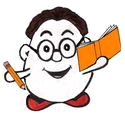The periodic table was constructed by a Russian chemist named of Dmitri Mendeleyev in 1869.
Scientists classify elements by color, odor, and taste.
Elements in the same column of the periodic table have the same number of electrons in their outermost shell.
The subscript in a compound element stands for the number of atoms of an
element that are present in the molecule.
Additional Facts:
1.
2.
3.
4.
 | ||||
 | ||||
 | ||||
 | ||||
 | ||||
 | ||||
a series of reactions where the products cause the reactants of another reaction
the symbolic representation of a chemical reaction
chain reaction
chemical equation
 | ||||
 | ||||
 | ||||
 | ||||
 | ||||
 | ||||
substances that are combined and changed during a chemical reaction
reactants
a substance that results from a chemical reaction
where two or more elements are combined to create a product
product
combination reaction
an organic compound that contains carbon, hydrogen, and oxygen and is a major source of food and energy
carbohydrate
 | ||||
 | ||||
 | ||||
 | ||||
 | ||||
 | ||||
chemical elements that have properties of both metals and nonmetals
a chemical element that melts at low temperatures and have low luster
metalloids
nonmetals
 | ||||
 | ||||
 | ||||
 | ||||
a process that occurs when an element or substance has been broken down
decomposition reaction
a tabular display of elements organized according to their atomic numbers
periodic table
chemical elements that conduct heat and electricity as well as melt at high temperatures and
have brilliant luster
metals
Science: Periodic Table of Elements - Flashcards
Use the flashcards to help you memorize the following terms and definitions. Then try the worksheets shown on the Science Homepage. Once you are ready to quiz yourself, click the Quiz link.

